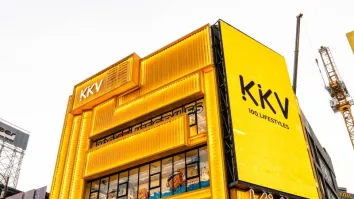What makes a company ‘iconic'?
Retailers generally grasp the challenges they face in achieving excellent customer experience levels and they understand how they can deploy technology and talent to sustain them. Erwann Thomassain, vice-president of Marketing, APJ, Genesys, shares a brief checklist of the strategies and perspectives distinguishing iconic firms in the retail industry that optimise their resources in service of their brands from those that do not.
Technology leadership
“Iconic” companies, which maintain the highest levels of customer experience (CX) satisfaction and have world-leading brand recognition, have already taken definite steps to employ leading solutions, particularly in customer analytics and channel management. The need to understand customers intimately — and to place the customer experience, in a sense, above efficiency — is not a new revelation for leading firms. What may be, by contrast, is the understanding that while technology is essential to improving all aspects of customer experience, it cannot be the sole focus of strategy.
Artificial intelligence (AI) investment
AI is not seen as a panacea for iconic firms, and indeed those firms exercise caution when putting AI in place, as efficiency must be tempered with human “ears” to hear customer concerns. Ultimately, leading firms feel that AI’s primary contribution to CX will not be to automate lower value enquiries and interaction. Rather, AI tools today support human agents in making complex decisions that will improve customer experience even further.
Omni-channel excellence
Combining analytics with tools that heighten visibility across channels is a clear priority for iconic companies. Ironically, “digital first” firms tend to be those that look to increase investment in human talent to optimise those channels, and deploy technology to support better trained, more empowered service agents.
Sharing with partners in moderation
To extend optimal customer excellence levels across the ecosystem, Iconic firms are keen to work with channel partners, suppliers and adjacent brands. What they are less keen on is opening up their entire chain of customer analytics to their partners. There is a very real sense that in order to take full advantage of the insight a firm has into its customers’ journeys, its leaders need to hold it close.
Support brand values
As customer intimacy and visibility increases, iconic companies realise that this is a two-way street. Corporate social responsibility is one way for industry leaders to demonstrate that their firms share common values and aspirations with their customers.
Virtual reality (VR)
VR enables retailers to sift through reams of data, and sort through contact centre data to drill into particular locations, groups or individual agents’ performance.
Internet of Things (IoT):
With everything connected — and events and triggers coming off of all devices — retailers have the opportunity to guide a customer’s journey, with business rules and activities along the way.



















 Advertise
Advertise





